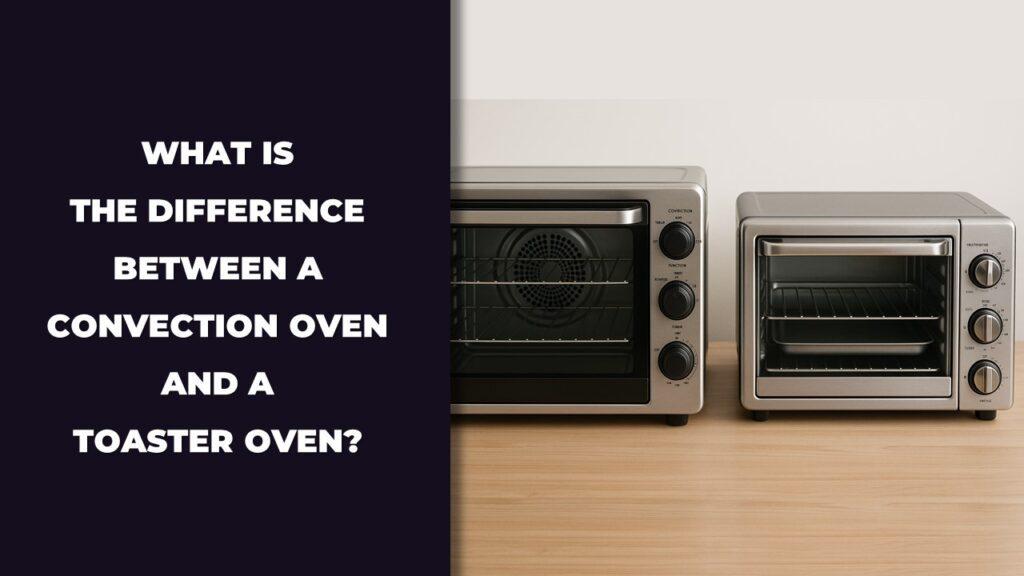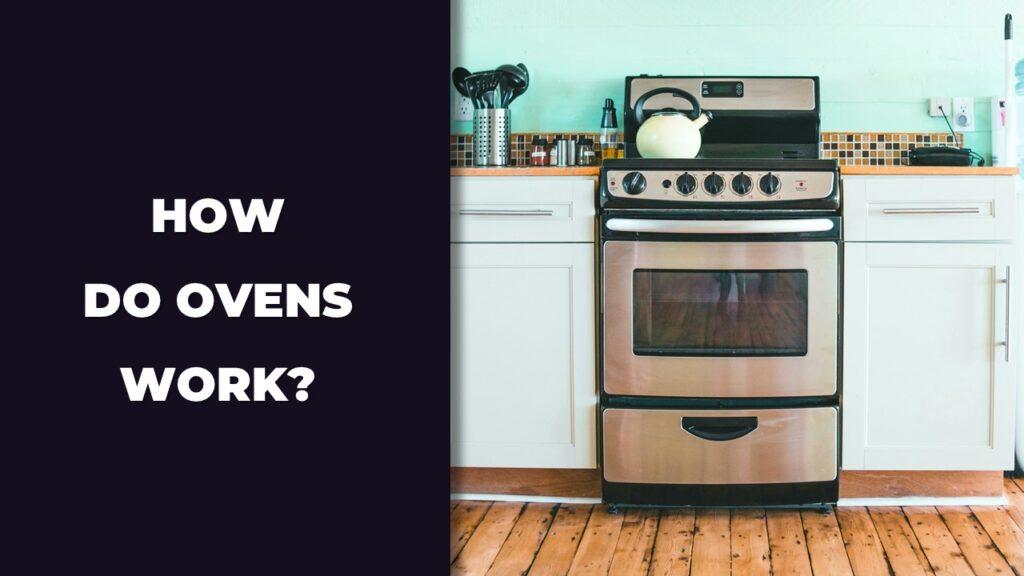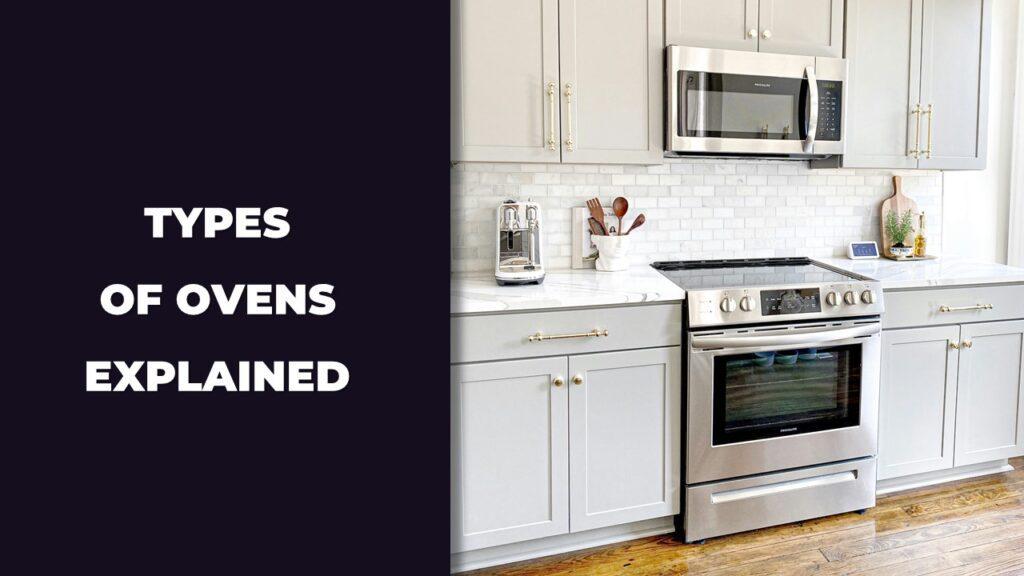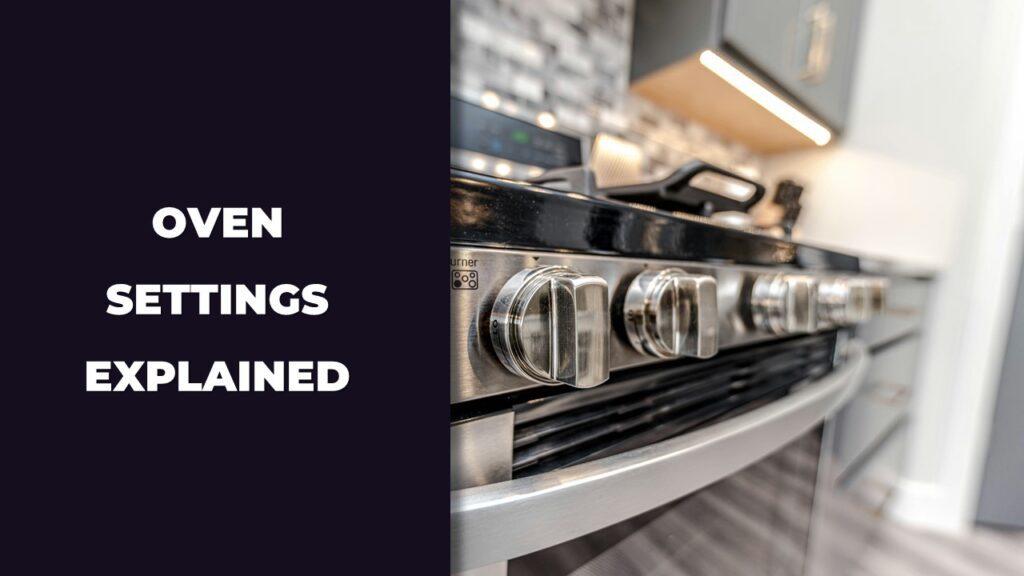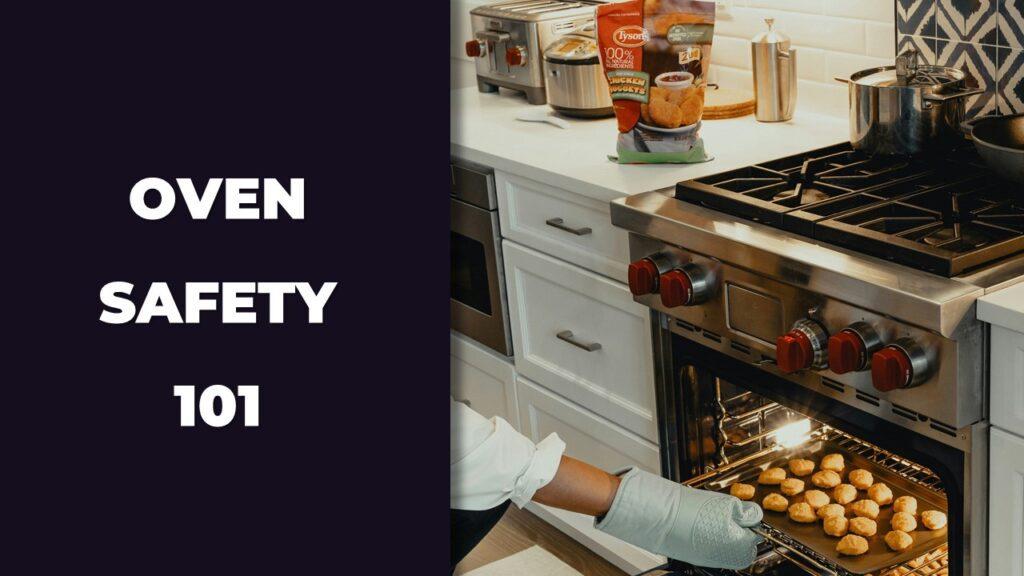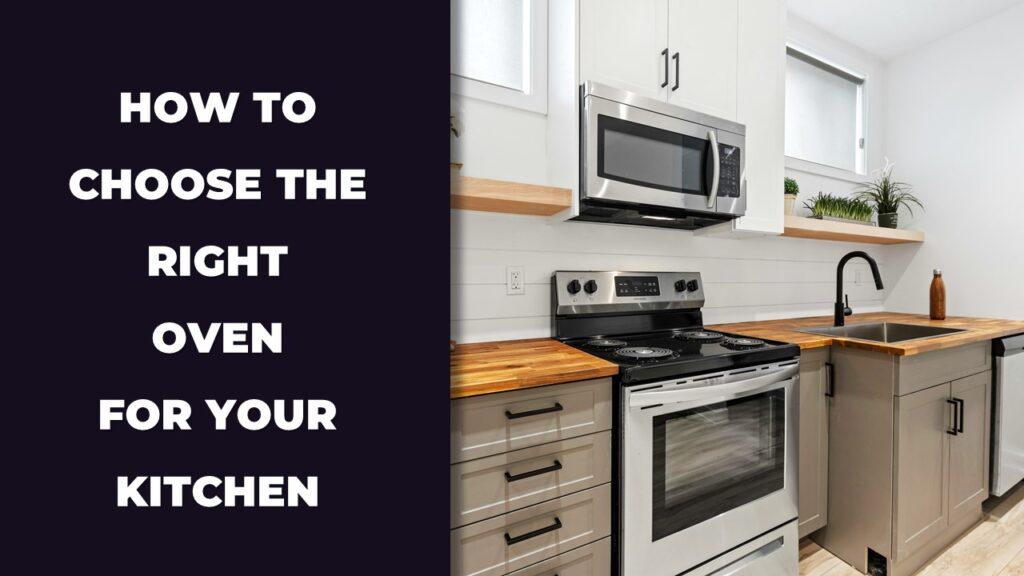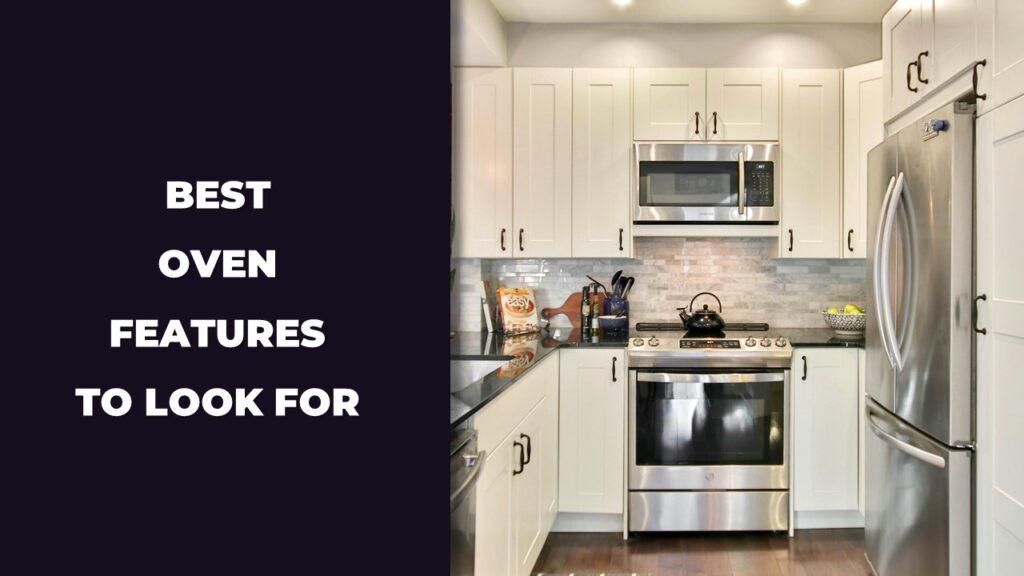
The best oven features to look for in 2025 are smart controls, air fry and steam modes, self-cleaning functions, and flexible cooking options. Smart controls let you run your oven from your phone. Air fry and steam help cook healthier meals. Self-cleaning makes cleanup easier, and features like double compartments or food sensors help you cook faster and more accurately.
We’ll walk through each of these features, explain how they work, and help you decide which ones actually matter for your cooking style and budget. This way, you don’t end up paying for things you’ll never use.
Why Oven Features Matter More Than Ever In 2025
Oven features matter more in 2025 because today’s kitchens are smarter, busier, and more personalized. People want appliances that save time, help them cook better, and fit into modern routines. From remote access to healthier cooking options, the right features aren’t just nice to have, they’re practical.
More families are cooking at home, juggling work-from-home routines, or managing mealtimes with tighter schedules. Features like air fryers built into the oven or smart timers that work through your phone can actually make daily cooking simpler and faster. It’s no longer just about baking and roasting, your oven now needs to multitask.
And it’s not just tech lovers who care. Even casual home cooks are looking for ovens that clean themselves, save on energy bills, or help them try new recipes. Whether you’re baking sourdough or reheating leftovers, features that make cooking easier, safer, and more enjoyable are now worth paying attention to.
Smart Oven Features That Save Time And Make Life Easier
Smart oven features like Wi-Fi control, voice commands, and AI-guided cooking can take the stress out of cooking. These tools help you keep an eye on your food, adjust settings remotely, and even offer advice based on what you’re making. It’s like having a helper in your kitchen—without needing an extra pair of hands.
Wi-Fi And App Control
Controlling your oven from your phone sounds fancy, but it’s surprisingly useful. With Wi-Fi-enabled ovens, you can preheat on your way home, check the cooking status without leaving the couch, or turn the oven off if you forget. Some apps even send alerts when your meal is done. This feature is great for busy households and anyone who loves convenience.
Voice Assistant Integration (Alexa, Google, SmartThings)
Many ovens now work with Alexa, Google Assistant, or Samsung SmartThings. You can say things like “Preheat oven to 400 degrees” without pressing a single button. It’s helpful when your hands are messy from kneading dough or marinating meat. Voice control also makes things easier for seniors or anyone with limited mobility.
AI-Powered Guided Cooking
AI in ovens is no longer just a fancy add-on. It can actually help you cook better. Some models recognize the dish you’re making and automatically set the time and temperature. Others give step-by-step instructions on the screen or app. If you’re unsure how long to bake salmon or what temp is best for lasagna, the oven can guide you through it. This is a game changer for beginners and even helps experienced cooks try new meals without guesswork.
Built-In Cooking Functions That Replace Other Appliances
Ovens in 2025 often include built-in cooking functions like air frying, steam baking, and sous vide, so you don’t need separate countertop gadgets. These built-in features help save space, cut down on clutter, and give you more cooking flexibility in one appliance.
Built-In Air Fry Mode
If you’re using a countertop air fryer, your oven can now do the same job—just with more space. The built-in air fry mode circulates hot air quickly to crisp up foods without using much oil. It’s perfect for fries, chicken wings, or even frozen snacks. You get the crunch you want without needing to preheat a separate appliance or sacrifice counter space.
Steam Cooking And Steam Baking
Steam features help you cook food that stays moist on the inside but still browns well on the outside. Moreover, steam baking is especially useful for making soft bread, tender fish, or reheating leftovers without drying them out. Some ovens mix steam with traditional heat, which works great for roasts and baked goods that need a little extra moisture.
Sous Vide Compatibility Or Steam Assist
Some high-end ovens now offer sous vide-style cooking without needing a water bath or extra device. You can slow-cook sealed meats and vegetables at a steady temperature using built-in steam assist settings. This feature gives you better control over texture and flavor—especially for steak, chicken breasts, or delicate vegetables. It’s a smart pick for anyone who wants pro-level results at home.
Self-Cleaning And Maintenance Features To Look For
Ovens with self-cleaning features like pyrolytic cycles, steam cleaning, and removable parts help cut down on scrubbing and make routine maintenance easier. These built-in tools save time, reduce mess, and keep your oven running smoothly without needing harsh chemicals.
Pyrolytic Self-Cleaning
This is the heavy-duty option. The oven heats up to very high temperatures and turns stuck-on food into ash. Once it’s done, you just wipe the bottom clean. It’s especially helpful for people who cook often and want a deep clean without using oven cleaner sprays or spending an hour scrubbing burnt messes.
Steam Cleaning Options
For lighter messes or quick cleanups, steam cleaning is a gentle option that works in under 30 minutes. The oven heats a small amount of water to create steam, which softens grease and spills. It’s safer than high-heat methods and doesn’t leave behind strong odors. This is ideal for weekly maintenance or after messy bakes.
Removable Racks And Telescopic Rails
These aren’t just nice extras—they make cleaning and handling food easier. Removable racks can go in the sink or dishwasher, and telescopic rails slide out smoothly, so you don’t have to reach deep into a hot oven. It’s especially useful when you’re checking food or pulling out heavy trays, making your oven safer and more practical to use.
Energy Efficiency And Eco-Friendly Features
Energy-efficient ovens in 2025 use less power, retain heat better, and offer eco modes to lower your electricity bills. Features like triple-glazed doors, fast preheat, and smart shut-off can make a real difference over time.
Many people don’t realize how much energy their oven uses. A standard electric oven draws about 2.5 kWh per hour. If you cook for 1 hour daily at $0.15 per kWh, that’s:
2.5 kWh × $0.15 = $0.375 per use
Monthly (30 uses): $0.375 × 30 = $11.25/month
A more efficient oven that uses 1.8 kWh/hour would cost:
1.8 × $0.15 × 30 = $8.10/month, saving over $37 per year just on usage.
Key Features To Look For:
- ENERGY STAR certification: Helps identify ovens that meet strict power-saving standards.
- Triple-glazed doors: Keep the heat in, reducing how often the oven needs to cycle on.
- Eco cooking modes: Lower heat and fan settings for longer, steady cooking with less power.
- Fast preheat technology: Cuts down on waiting time and wasted energy.
- Auto shut-off and smart timers: Prevent energy waste if you forget to turn the oven off.
- Steam cooking efficiency: Steam ovens heat faster with less energy, especially for smaller meals.
If you’re cooking often, even small upgrades in efficiency can stack up to big savings over time, and a lighter load on your home’s energy use.
Design, Ergonomics, And User Comfort In Modern Ovens
Modern ovens are designed to be easier to use, safer, and more comfortable in daily cooking. Features like touchscreen panels, flexible compartments, and better mounting options are changing how we use the oven every day.
Touchscreen Controls And Digital Displays
Touchscreens have replaced knobs and buttons on many newer ovens. These displays make it easier to scroll through cooking modes, set timers, and follow guided recipes. Some even show step-by-step instructions or sync with apps for real-time adjustments. A clean interface also makes wiping down the surface quicker.
Flexible Oven Compartments (Single, Double, Flex Duo)
Not every meal needs a full-sized oven. That’s where flexible compartments come in. Some models have a single oven that can be split into two sections with separate temperature controls. This setup helps you cook two dishes at once—like roasting chicken on top and baking a pie below—without flavors mixing. Others come as full double ovens, which are great for large families or holiday meals.
Ergonomic Mounting (Wall Ovens At Eye Level)
Wall ovens let you install the oven at eye level instead of under the counter. This makes it easier to check your food, slide trays in and out, and avoid bending over. It’s especially helpful for older users, people with back issues, or anyone who cooks often and wants more comfort. Proper mounting also helps improve airflow and keeps hot surfaces out of reach of small children.
Popular Trends To Watch In 2025 Ovens
Oven trends in 2025 focus on smarter cooking, healthier meals, and space-saving designs. Homeowners are leaning toward ovens that combine multiple functions, connect to smart homes, and make everyday cooking simpler.
Here’s a closer look at what’s trending:
- All-in-One Combi Ovens: These ovens combine convection, steam, microwave, and even air fry into one appliance. Great for saving space and expanding your cooking range.
- AI Cooking Assistants: New ovens are using AI to suggest recipes, auto-adjust cooking time, and guide you step-by-step. Some can even recognize what’s inside.
- Smart Home Integration: Ovens that sync with SmartThings, Alexa, or Google Assistant let you start, stop, or adjust cooking with voice or phone.
- Slim and Minimalist Designs: Modern ovens are getting sleeker, with matte finishes, hidden handles, and touchscreen controls replacing bulky knobs.
- Healthy Cooking Features: Steam ovens, air fry modes, and sous vide support are now built-in—not add-ons—making healthy meals easier to prepare.
- Modular Cooking Setups: Some kitchens now use oven “zones,” like a convection oven paired with a steam oven and a speed microwave, all stacked neatly.
Common Mistakes To Avoid When Choosing Oven Features
A common mistake when shopping for a new oven is picking features that sound impressive but don’t match how you actually cook. People often overspend or choose models that add stress instead of convenience.
Avoid these slip-ups:
- Buying Too Many Features You Won’t Use: A built-in rotisserie or smart probe might sound fancy, but if you never roast meat or use guided cooking, skip it.
- Ignoring Energy Ratings: A cheaper oven may cost you more in electricity over time. Always check for energy-efficient certifications and real usage data.
- Not Measuring Your Space Correctly: Don’t assume all ovens are the same size. Measure your cabinet opening and depth before buying.
- Overlooking Cleaning Convenience: An oven that’s hard to clean can become frustrating fast. Look for self-cleaning options or steam-clean cycles that match your cooking habits.
- Falling For Looks Only: A pretty oven with poor controls, weak airflow, or uneven heating isn’t worth it. Form matters, but function matters more.
- Skipping the Service Check: Even the smartest oven won’t help if you can’t get it repaired. Always research brand support and local service options.
How To Choose The Right Oven For Your Cooking Needs
To choose the right oven for your cooking needs, think about how often you cook, what types of meals you make, and how much space you have in your kitchen. The best oven for you should match your lifestyle, not just look good or have extra features you’ll never use.
Here’s how to narrow it down:
- If You Cook Daily: Go for an oven with smart controls, quick preheat, and easy-clean options. These will save time and make daily meals less stressful.
- If You Bake Often: Prioritize features like steam baking, precise temperature controls, and convection fans that distribute heat evenly.
- If You Eat Healthy: Look for steam cooking, air fry modes, and even sous vide if you’re into clean, low-oil meals.
- If You Entertain or Cook Large Meals: A double oven or flexible compartment design will help you cook multiple dishes at once at different temperatures.
- If You Have Limited Space: Choose a compact wall oven with multi-function modes like a built-in microwave + convection combo to get the most from a small footprint.
- If You’re Tech-Friendly: Go for smart ovens that connect to your phone or smart home system. AI-assisted cooking is great if you like trying new things.
Final Thoughts
Ovens in 2025 are no longer just for heating food. They’re smarter, cleaner, and made to fit into everyday life. Features like Wi-Fi control, built-in air fry, steam baking, and self-cleaning modes now come standard in many models, helping you cook better with less effort.
But more features don’t always mean a better oven. What matters is whether those features actually make your cooking easier. If you bake often, look for even heat and steam support. If you cook quick meals, fast preheating and air fry might be more useful. And if you like tech, voice control or app syncing can save you time and energy.
Think of your oven as a teammate in the kitchen. It should help you cook the way you like, save you time on busy days, and take the stress out of everyday meals.
Related FAQs
What is the most useful oven feature in 2025?
Smart connectivity and AI cooking are top features. They let you control the oven from your phone, suggest cooking modes, and adjust settings automatically.
Is steam cooking better than traditional baking?
Steam helps keep food moist and flavorful. It’s great for bread, vegetables, and fish, and it holds on to more nutrients than dry heat alone.
Do I need both air fry and convection modes in an oven?
Air fry gives you crispier results with less oil, while convection provides even heat for baking and roasting. Having both gives you more flexibility.
Are smart ovens harder to maintain or repair?
They can be, depending on the brand. Some require special parts or service that’s not available everywhere. Always check service support before buying.
Do ovens with more features consume more power?
Not always. Many newer ovens are more energy-efficient thanks to better insulation, faster heating, and eco-friendly cooking modes that use less electricity.

At our core, we’re a group of passionate households and gardening tools and appliances users and enthusiasts. We dive deep into the world of tech, especially when it’s about your household or gardening electric items. We try to provide as much value to the readers with our information and how to blog articles as possible. For affiliate articles our honest and transparent reviews of essential tech products are rooted in real-world experience. We take great satisfaction in offering unbiased evaluations, ensuring that you can make informed decisions when investing in your desired techs.

